
Today’s successful marketing campaigns are largely driven by customer information and data-backed research.
Many businesses, both small and large, have realized the power of data-driven marketing and are continuing to reap a huge return on their investment.
Big data is now no longer just a buzzword.
Businesses are now counting on big data to gain an edge over their competitors in an effort to grow their market share.
If you want to optimize your marketing campaigns and deliver exceptional customer experience, then you definitely need to leverage data.
As a business owner, you have no excuse for not knowing what your customers want at any given time.
And for you to become successful at marketing your business and its products/services, you need to start leveraging data that is generated during your customers’ buying journey.
A great customer experience today requires interactions, individualized insights, and an active approach at meeting customers on their favorite platforms.
You no longer need to guess what your potential customers want; you just need to know how and where to look.
Research shows that most corporations are aware of the need for data-driven marketing, but they still face numerous challenges.
The highest concern from 79.4 percent of the executives in the survey was about the growing threats from data-driven competitors. Mainly those with cultures that give them speed and agility.
Data-driven marketing is effective, but most companies do not exploit the opportunity it grants them and their businesses.
Most of the companies treat the original data as top secret and use it to make decisions internally only.
Breaking down data silos is the only way to fully benefit from the opportunities of data-driven marketing. It helps your company make smart, decisive, and informed decisions.
What Is Data-Driven Marketing?

Data-driven marketing strategies depend on insights marketers pull from analyzing big data collected through engagements and interactions with their consumers.
It helps marketers make future behavior predictions. They understand the data they have, organize it, analyze and apply it to improve their marketing efforts.
Data-driven marketing is mostly used to personalize the customer experience with your brand.
The rising quality of data followed by a burgeoning growth of automation and production technologies has led to personalization in marketing.
Data-driven marketing allows marketers to know whom to send what message (right customer), where to send (right device) and when to do it (timing).
Your business already uses customer information to improve its sales and marketing campaigns. Data-driven marketing enables you and your marketing team to collect valuable data from many sources, analyze it and use it to target the right audience.
Top 10 Reasons to Turn Your Business into a Data-driven One

Using a data-driven approach to marketing does a lot for your business, including:
1. Helps you determine future trends
A data-driven approach provides you with a wealth of information you can use for actionable insights. You can spot prospect or customer patterns and identify emerging trends.
According to research by Forrester, 74 percent of corporations want to be data-driven. However, among them, only 29 percent know how to connect analytics to action. Most of them lack actionable insights to drive their business based on the data they collect.
The data collected must be processed, aggregated, and organized into a contextual format. The information is presented either in the form of reports, dashboards, or visualizations.
By analyzing this information, you gain insights and conclusions. These insights can then drive change or influence decisions.
However, insights must be actionable. According to Forbes, an actionable insight that can drive action is more valuable than one that simply answers a question. It makes you rethink certain decisions and pushes you in a different direction.

Image Source: Forbes
For an insight to be actionable, it must motivate several individuals to think deeply about the data and act on it. You may have a mountain of data, but arranging and organizing it is the only way to get valuable insights. Otherwise, it’s all pretty much worthless.
The best insights align with your goal, are contextual, relevant, specific, new, and clear. They are actionable and prescriptive. Your marketing team can then use them to take immediate action aimed at informing a future path or improving business.
Actionable insights allow your brand to understand what your customers really need, empower them, and have meaningful engagements.
2. Allows you to make decisions based on facts, not assumptions.
Fifty-eight percent of businesses are still using their gut feeling to make business decisions rather than using data. Using data to make decisions leads to better customer experiences.
Your company can explore your customer preferences and trends and smartly respond to their needs. It makes decision making easier and faster. There is also more confidence in the decisions made after analyzing data.
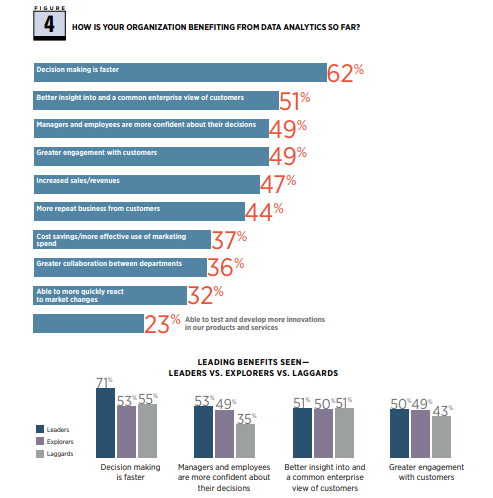 Image Source: Forbes Insights
Image Source: Forbes Insights
3. Allows you to drive product development
Data is used as an integral part when developing products. Your marketing team will use data to understand your customers and the role of the products or services you provide in their lives. Product teams must constantly improve products depending on market changes and the evolving needs of customers.
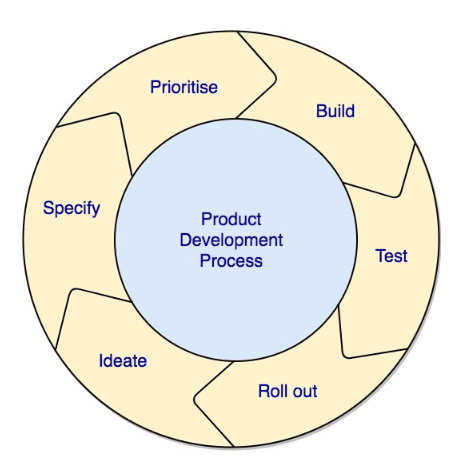 Image Source: Snowplow
Image Source: Snowplow
A product team can start by focusing on a market for the product. Once found, they switch their focus to improving user experience. They aim to drive more value for the business and the users. They make updates, develop, and roll them out.
Data gained is used to:
4. Allows you to increase customer engagement
Fully engaged customers represent a 23 percent premium in profitability, the share of wallet, relationship growth, and revenue compared to the average customer. Companies that engage their customers successfully realize 55 percent higher wallet share, 63 percent lower customer defection, and higher productivity by 50 percent.
Customer engagement can be in the form of interactions, reactions, and customer experience. The engagement can be of different types, including emotional, social, convenience, contextual, and post-purchase.
With data, you can personalize customer experiences leading to increased engagements. The data used is related to how the customer is interacting with your brand and using your products.
Data to collect includes location, number of orders, date of first and last order, reviews submitted, and lifetime customer value. You can get the data by tracking them indirectly online, asking questions, using analytics and other data collecting sources like vendors, regulators, and competitors.
Organizations that make use of data from multiple sources lead the way in customer engagement. You get 25 percent more engagement when you use data and analytics.
Customer engagement strategies include:
Automation can help your company handle more data and receive insights quickly. It ensures customers are engaged while they are tuned in to the problem, making them more likely to make key decisions. Timely data increases your customer engagement scores. Companies leveraging Artificial Intelligence are 50 percent more likely to get timely data.
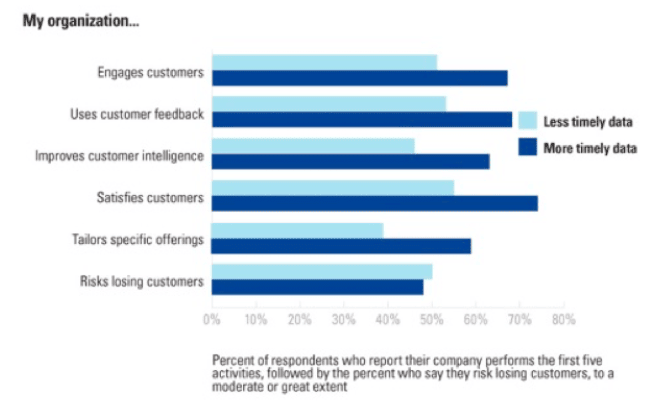 Image Source: MIT Sloan Management Review
Image Source: MIT Sloan Management Review
5. You can share your data across several channels
Multichannel marketing helps you sell and promote your brand where your customers might be. When effectively done, it pinpoints where your audience spends most of their time.
The average customer has more than four devices that can connect to the internet. It’s your job as a marketer to be available on these channels to increase engagement.
Customers can access information from the website, smartphone, social media, and so many more channels. A multichannel marketing strategy ensures that you are available on all relevant platforms to connect with more people. Additionally, incorporating a QR code into your marketing efforts, created with a reputed QR Code Generator, can provide a convenient way for customers to access your digital content or promotions.
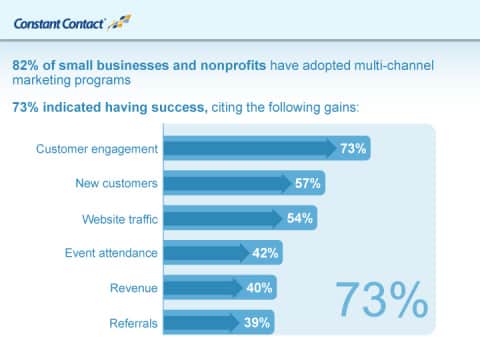 Image Source: Business Wire
Image Source: Business Wire
A multichannel strategy allows you to be active in the right places. It will involve collecting data from your target audience, then using the information to build your multichannel strategy. With a multichannel strategy, you get an 89 percent retention rate.
Data will show you where your customers are coming from and which are the messages that resonate with them. With this information, you can optimize the strategy accordingly.
Be careful, though. You have to choose only channels that are relevant to your company and the brand. Then create a single campaign and tweak it to run on the different channels. This way, whatever channel your customers use, you are there providing a seamless and easily recognizable experience.
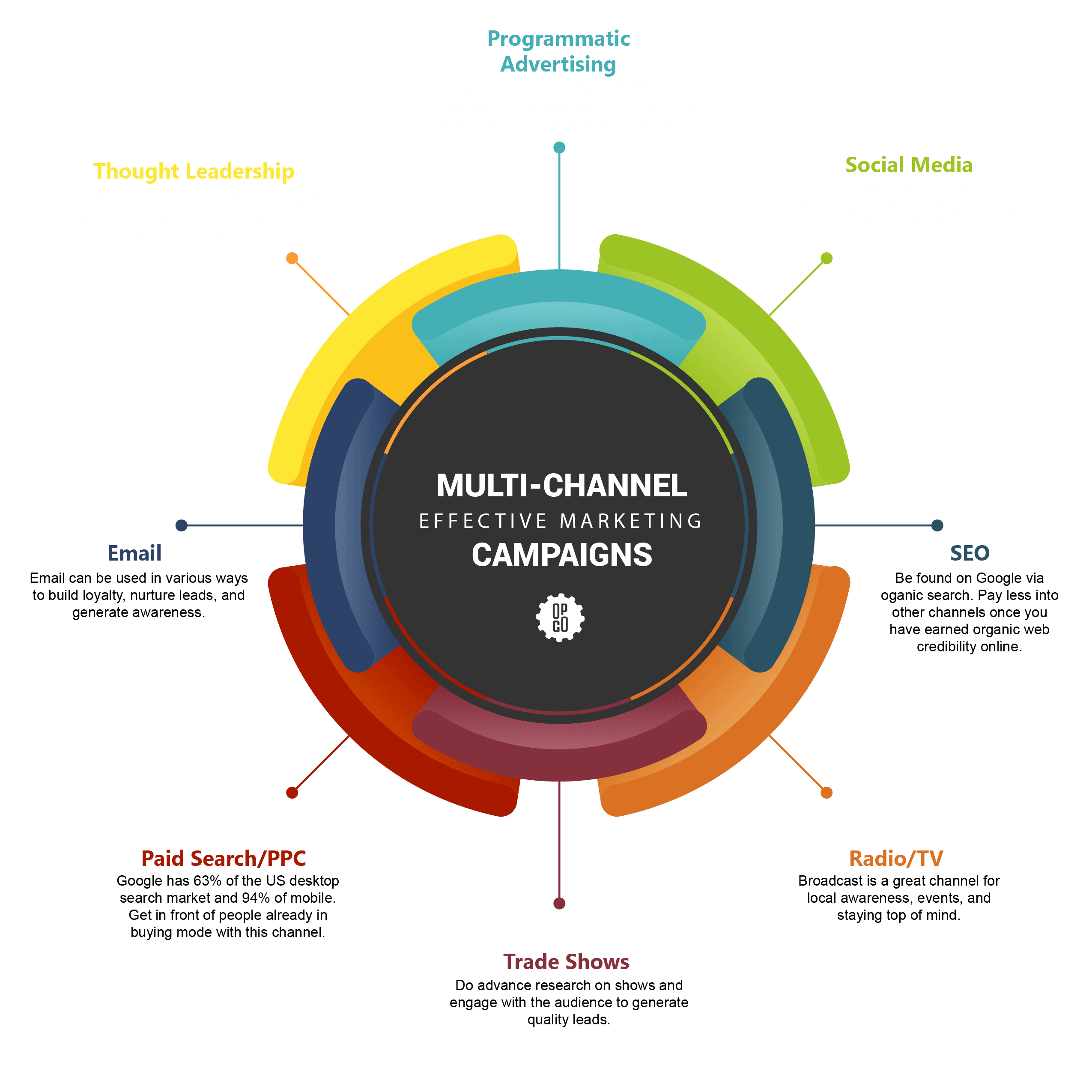 Image Source: OPGO Marketing
Image Source: OPGO Marketing
6. Use data to increase profit
You can leverage data from sales made to improve the bottom line. Generate the right data by tracking:
Tracking website data helps you find out what keywords drive more leads, which pages have the most visits, what products have high conversion rates and which content engages readers more. You can then use this information to improve your marketing efforts.
Doing the same for your social media data helps you find out lead sources, those who converted to sales and what channels they used. Data from industry trends, customer reviews, and surveys also help you improve your products and marketing efforts.
7. Helps you streamline operations
Gathering data at both individual and transactional level helps you understand your customers. Automation helps you prioritize through making the data manageable, useable, and useful. You can then use the information gathered to make short- and long-term strategies aimed at growing your brand.
Using data to improve your brand visibility helps you allocate resources better. You also optimize operational speed, cut wastage, and improve customer and employee experience.
It also enables you to shorten the time taken from lead generation to sales. Your company becomes stable, organized, and ready to tackle challenges.
Data also helps you understand your customer needs and wants. You can then predict demand and ensure you meet it sufficiently.
8. Gives you a competitive advantage
Knowing what needs to be improved, trends in sales, potential market gaps, and insights into the future give you a competitive advantage. Using data allows companies to become more efficient at procurement, develop better marketing strategies, save money, support the growth of the business, and gain a competitive edge.
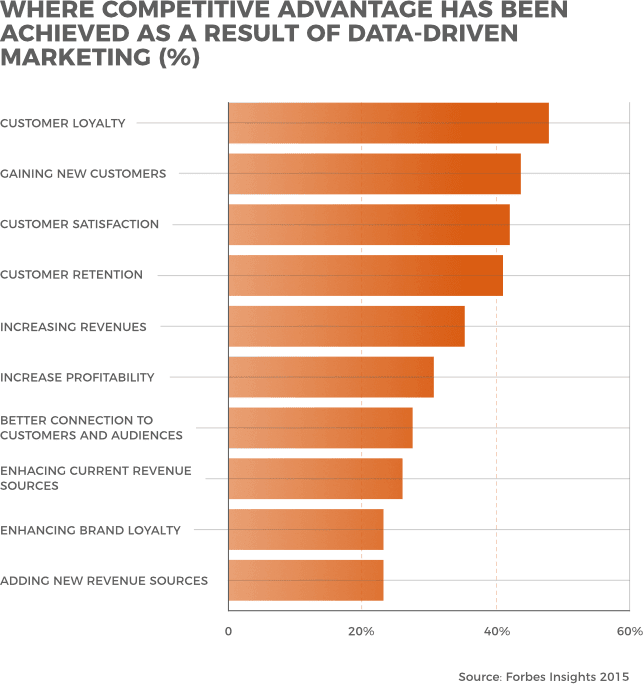 Image Source: Adverity
Image Source: Adverity
Bringing together data from different sources gives you real-time insights, improves collaboration, gives better results and competitive advantages. You can accurately spot customer trends, sales peaks, and significantly improve customer relations.
It also leads to better decision making and improves efficiency. Data-driven marketing is crucial, especially if your business is in a highly competitive environment.
9. Enhances consistency
The same data and insights are used across the company, maintaining and improving consistency. Decisions make more sense and are more transparent, which makes it easy for other departments to understand business goals.
Content creators, marketers, sales reps, etc. have access to the same insights.
Messaging across all platforms will also remain consistent and aligned with your business objectives. Your audience receives consistent, high-quality information as they go through the buyer’s journey.
10. Better segmentation and reliable assessment
With data, segmenting your customers into smaller groups becomes so much easier. It makes the group manageable, makes things easier for your marketing team, and improves customer service. You can also measure the success of specific sections of a project, strategies, and policies with accuracy.
Real-time data from different platforms make it easy for your business to access and study its market penetration.
You can use the information to evaluate your performance. It also helps you change or tweak your business strategies to target consumers better and personalize communication. This personalization also leads to increased engagement with your consumers.
How To Turn Your Business Into A Data-driven One

It should be clear by now why you can no longer treat data as a business activity byproduct. Data has immense value and you can use it to improve your decision making and other aspects of your business.
However, even though businesses recognize the importance of data and analytics, most of them are struggling with capturing the data, managing and sharing it.
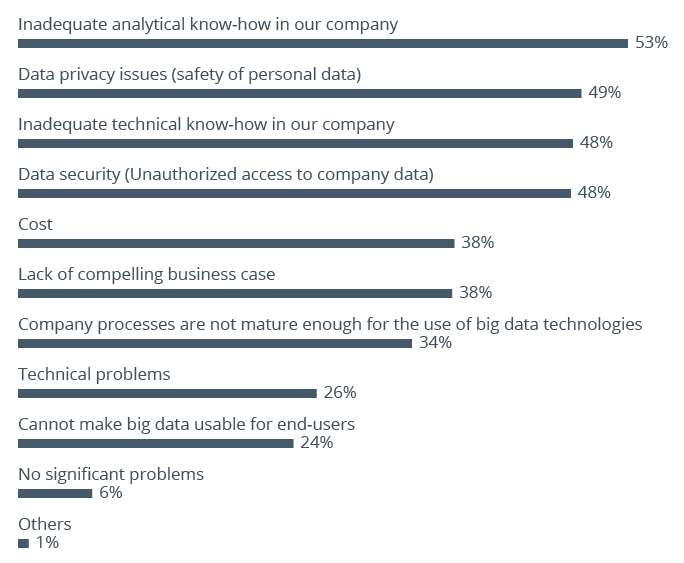 Image Source: BI-SURVEY.com
Image Source: BI-SURVEY.com
The lack of necessary data-related skills is a huge problem since the market has few people qualified for this kind of job. Most companies end up hiring anyone who has some form of IT know-how with the hope that they can learn how to leverage data.
Other companies spend tons of money hiring data scientists who know how to extract, clean, and present data. However, they do not know how the data can be used to create better opportunities for the business or solve actual problems.
How to make your business a data-driven enterprise

1. Have someone heading your data department
Make sure that those you hire are competent and understand how the data should be used to boost your business.
Employing data experts ensures that the data you collect is blended well with the company knowledge, and used to derive insights and come up with better marketing strategies.
Such an expert can help your organization determine what data sources it needs to investigate, your customer needs, and how to incorporate this data into the company’s decision making.
Data harvesting is a long term activity. Hence, it needs someone who understands the entire process. It is, therefore, important that you get the right person to manage and oversee your data.
However, data scientists are an endangered species. They are in high demand, and hiring one may take a lot of time.
An alternative solution would be to identify someone within your company who can easily and comfortably take up that role and then develop their skills further. Such a person already knows the company culture and also understands its goals. So half the battle is already won.
This way, you will foster collaboration between departments, ensure data is collected, stored, managed, used, and shared effectively.
2. Identify what kind of data you need to collect
Save money and time by collecting only the data you need. Most marketers have access to lots of data, and it’s encouraging to see that only 26 percent of businesses lack the data needed to make data-driven decisions.
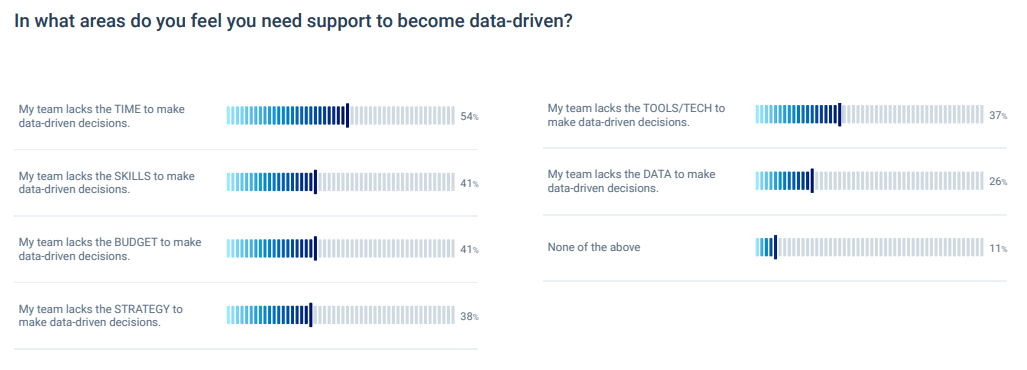 Image Source: Mynewsdesk
Image Source: Mynewsdesk
However, most of this data is irrelevant information that is not actionable. You only need to collect the data you need. You must also comply with industry regulations and only collect the data consumers voluntarily give you.
3. Democratize data
Everyone in the organization makes business decisions daily. Imagine if they were all making data-driven decisions, how efficient would your business become?
But how do you shift their mindset while protecting your company from data leakages and privacy issues?
First off, remember that you don’t need to share all the information with everyone in the organization. Figure out who the decision-makers are and then, depending on their roles, provide them with data that helps them make decisions.
It’s all about presenting the right data to the right people so that they can make the right decisions – preferably the ones that favor your business.
Those outside the marketing team also need to understand why you are collecting data and how it affects the achievement of the company goals.
Bring everyone up to speed. Help them understand how to collect data, when and why it’s necessary.
Their feedback will be gold, and their contributions will help improve company performance. It also means that the data head ensures teams are clear on what metrics the company is measuring and how to interpret them.
It will be hard to shift their mindsets to embrace data fully. But patience and diligence will be your key platforms.
4. Integrate with user-friendly platforms
An integrated system of platforms ensures that users access data in a sophisticated way using a user-friendly dashboard. Determine how many platforms you work with daily.
How do you circulate the information from one department to the next? Can you connect these platforms to control information flow and easy access? With user-friendly integration platforms like SyncApps, your team saves time, you sync data in real time, and stay productive.
The platforms can be used by those who understand tech and those who don’t. It becomes easier to access performance reports, analytics, and visualizations with an easy to use dashboard. Spreading data across those who can use it ensures better decision making.
5. Measure the impact and value of data
The value and impact of data used should be one of your Key Performance Indicators (KPIs). Set measurable goals to see what part of the business is affected by what variables.
The data collected should have a measurable output. Doing this will help you evaluate performance. Your employees will also feel like they are part of the company since they are contributing to the bottom-line.
There are many benefits to running a data-driven business. And it’s not just great for businesses, but for the economy in general, too. Let’s take a quick look at them:
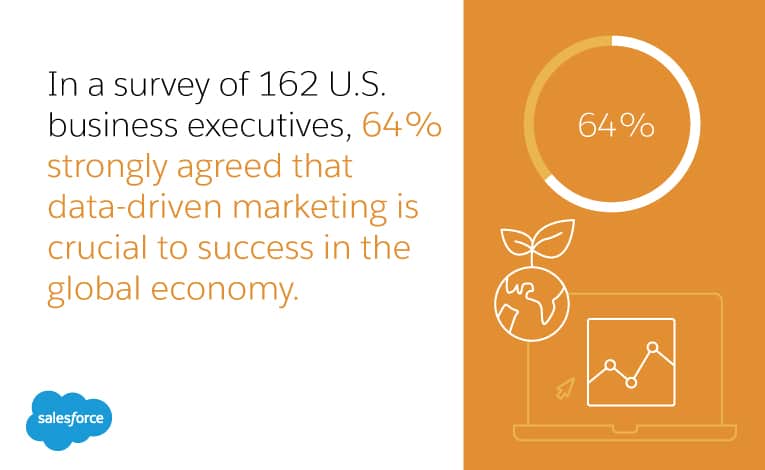 Image Source: Salesforce
Image Source: Salesforce
Eventually, it all trickles down to the customer. You get a clear understanding of their needs and how best your company can fulfill them. Knowing more about your ideal customer helps you personalize their experience.
Your employees are an important part of this journey, too, and you need to show them how a data-driven environment is important to the business and why. How by using the data they will contribute to achieving company goals.
It’s all about changing the company culture into a data-driven one. Start with the leaders, and eventually, the culture will trickle down to everyone. Your company will then have achieved data maturity.v